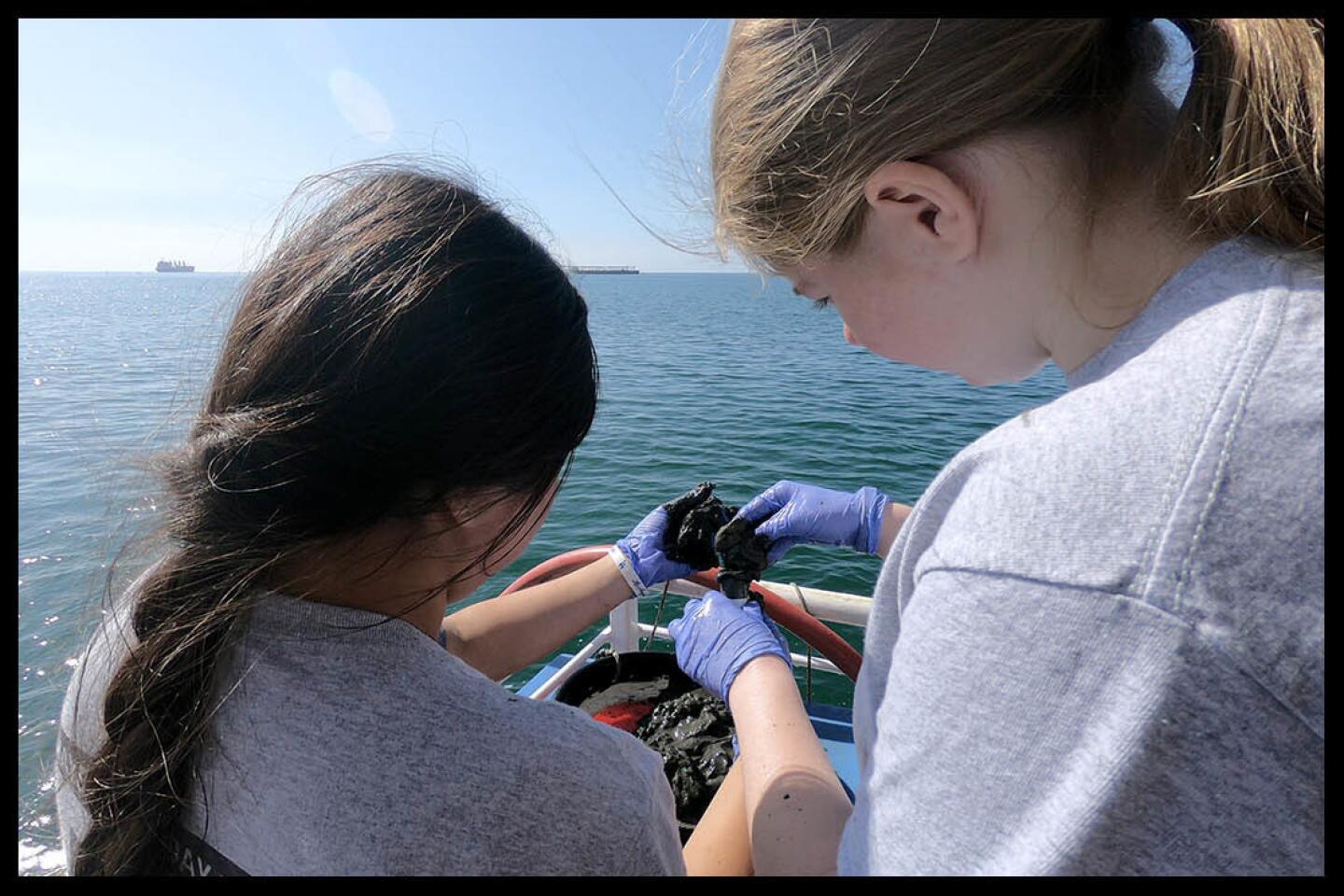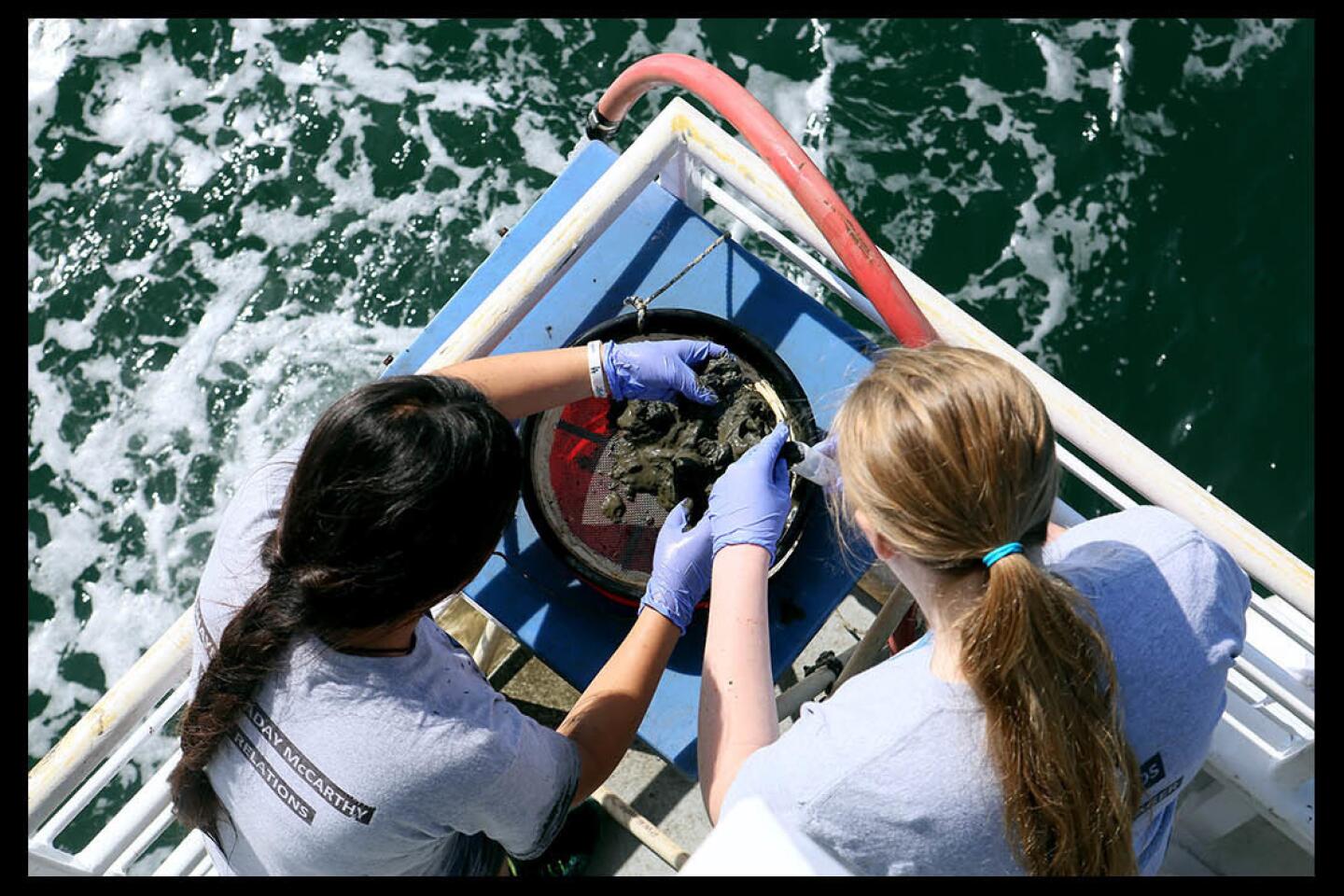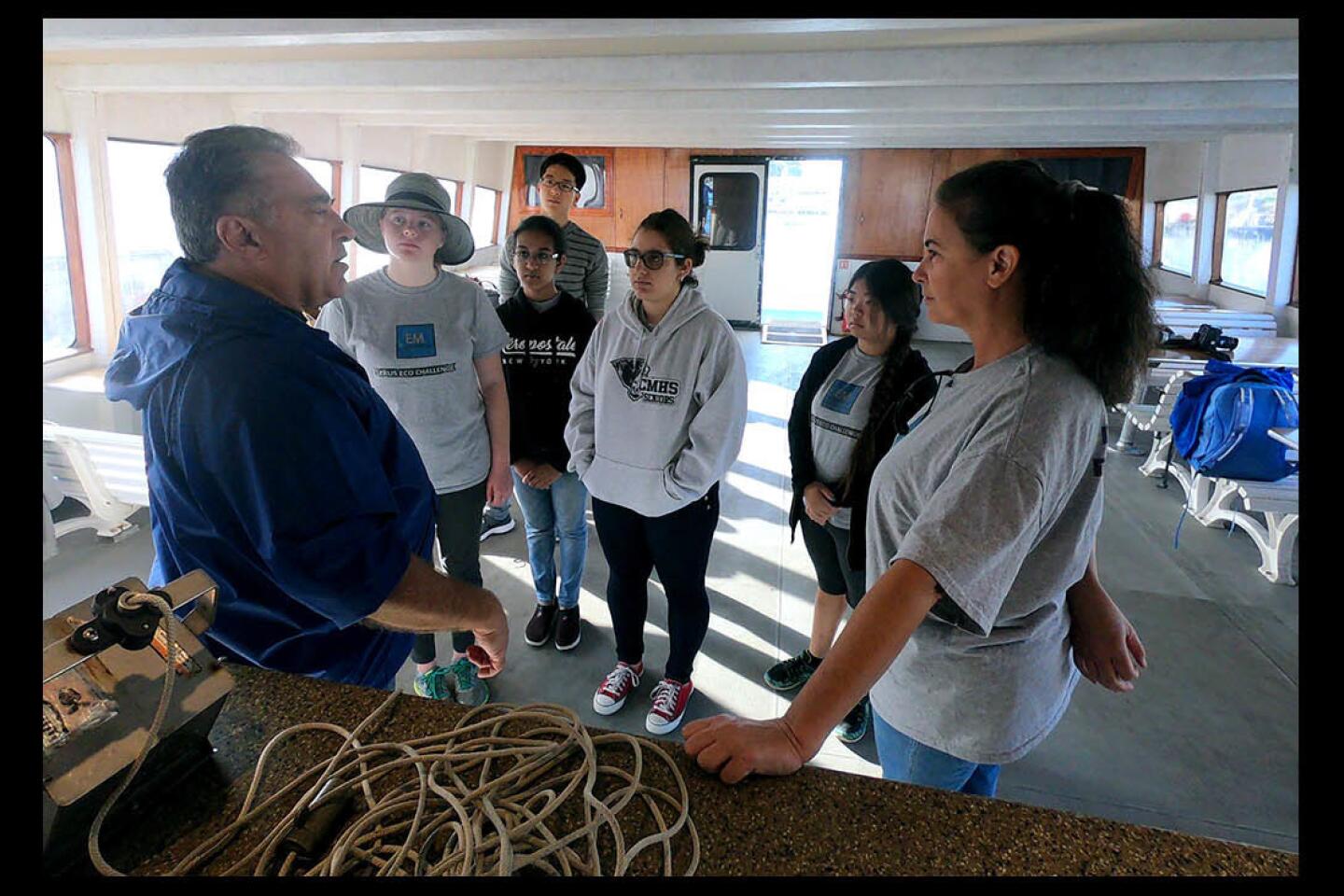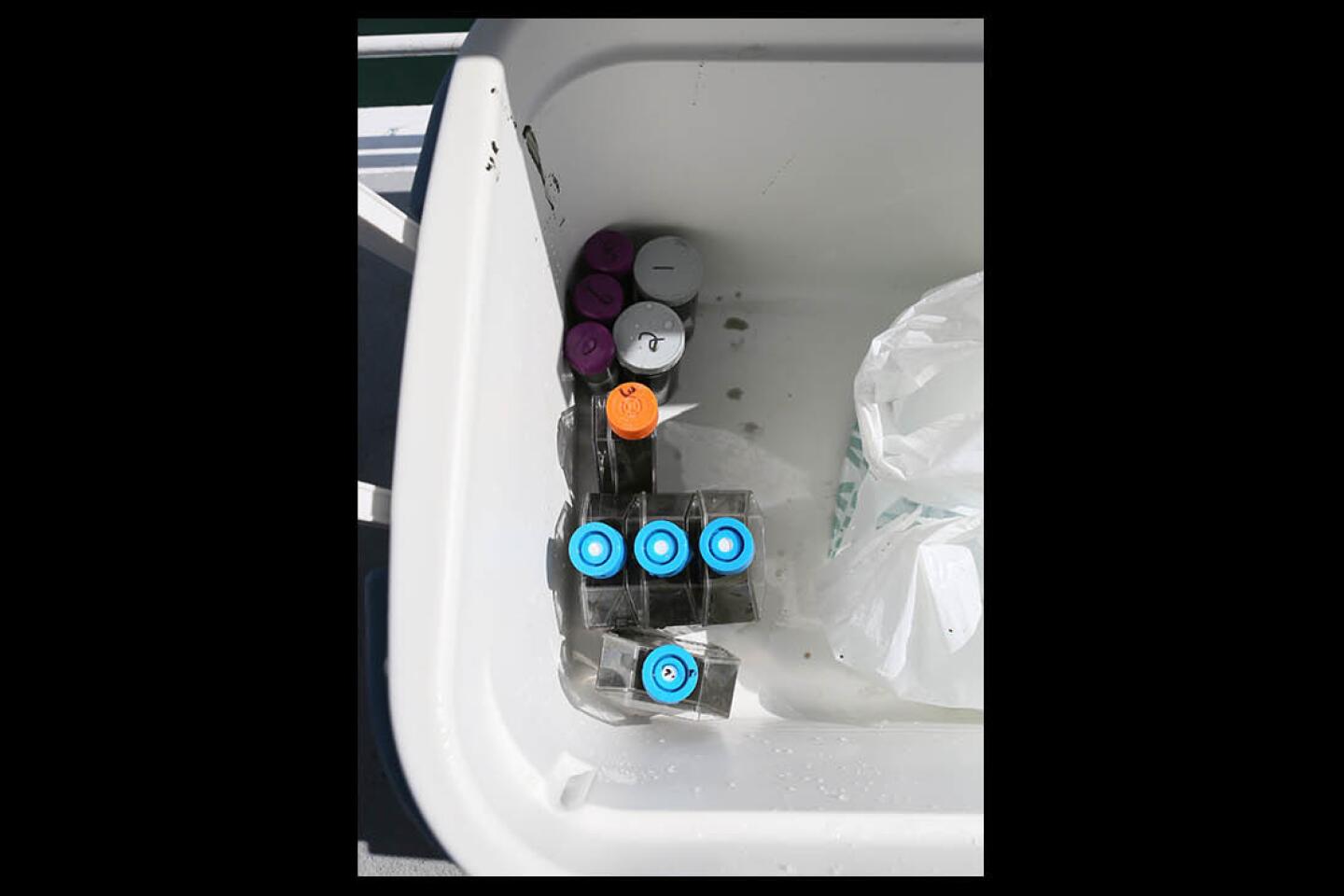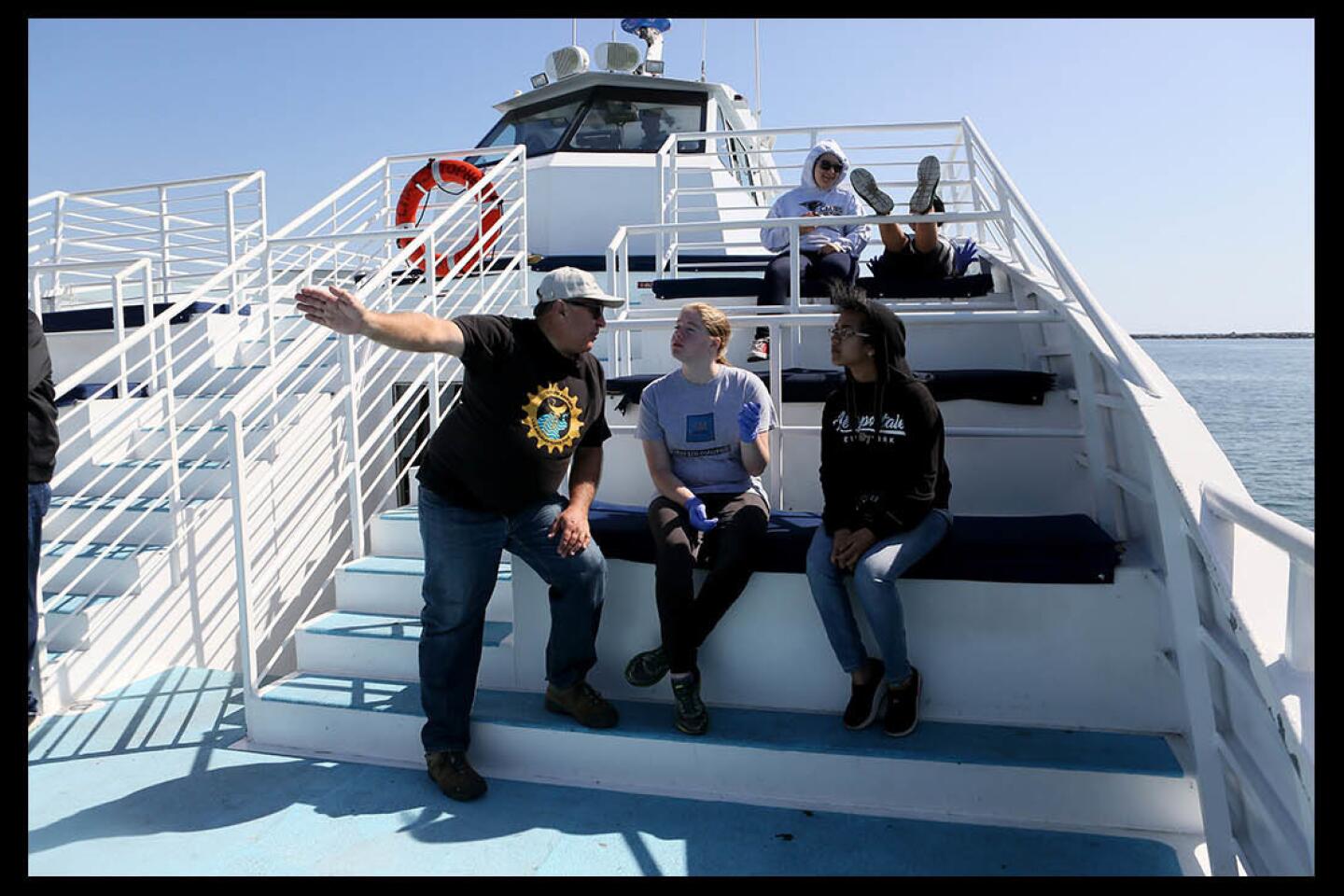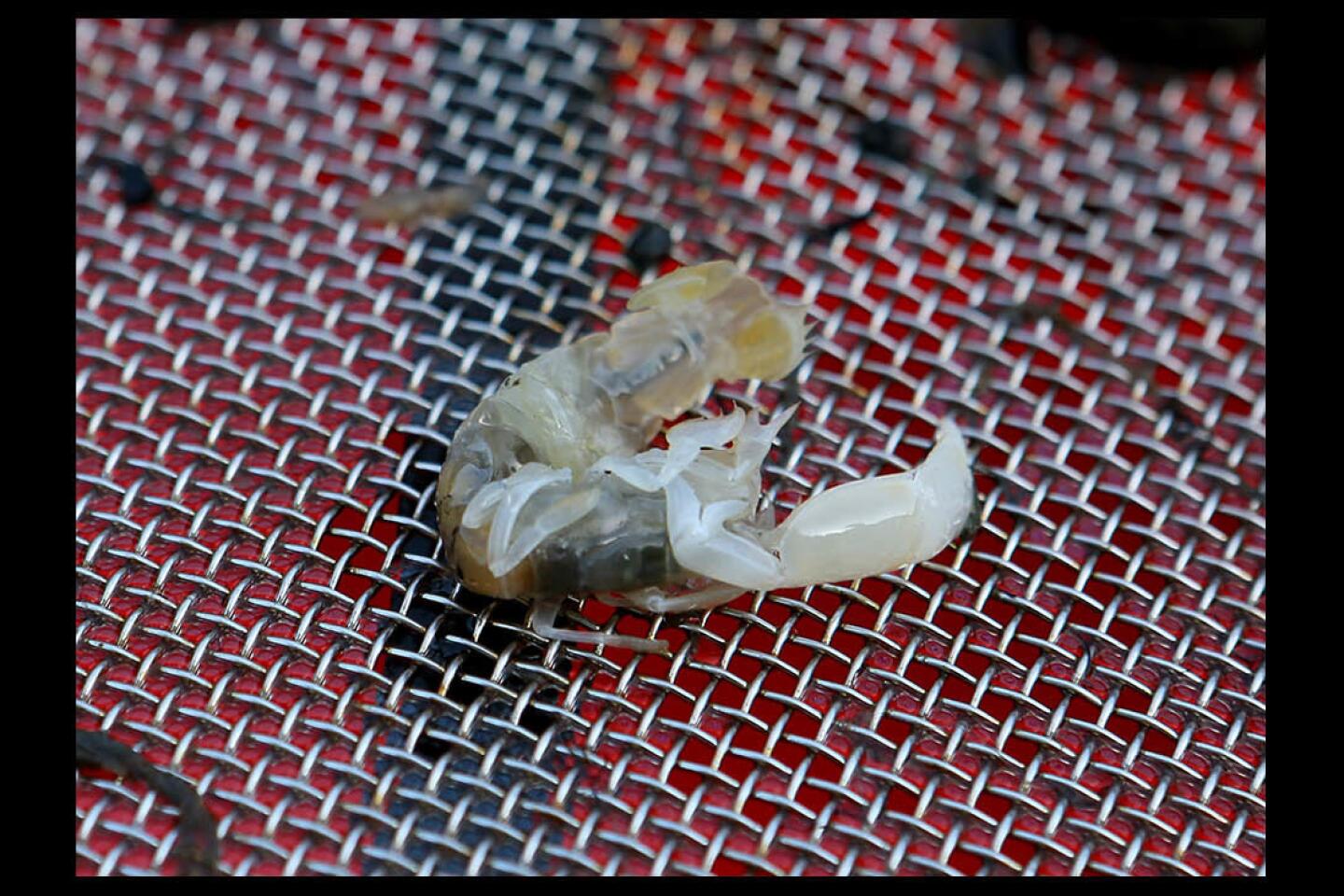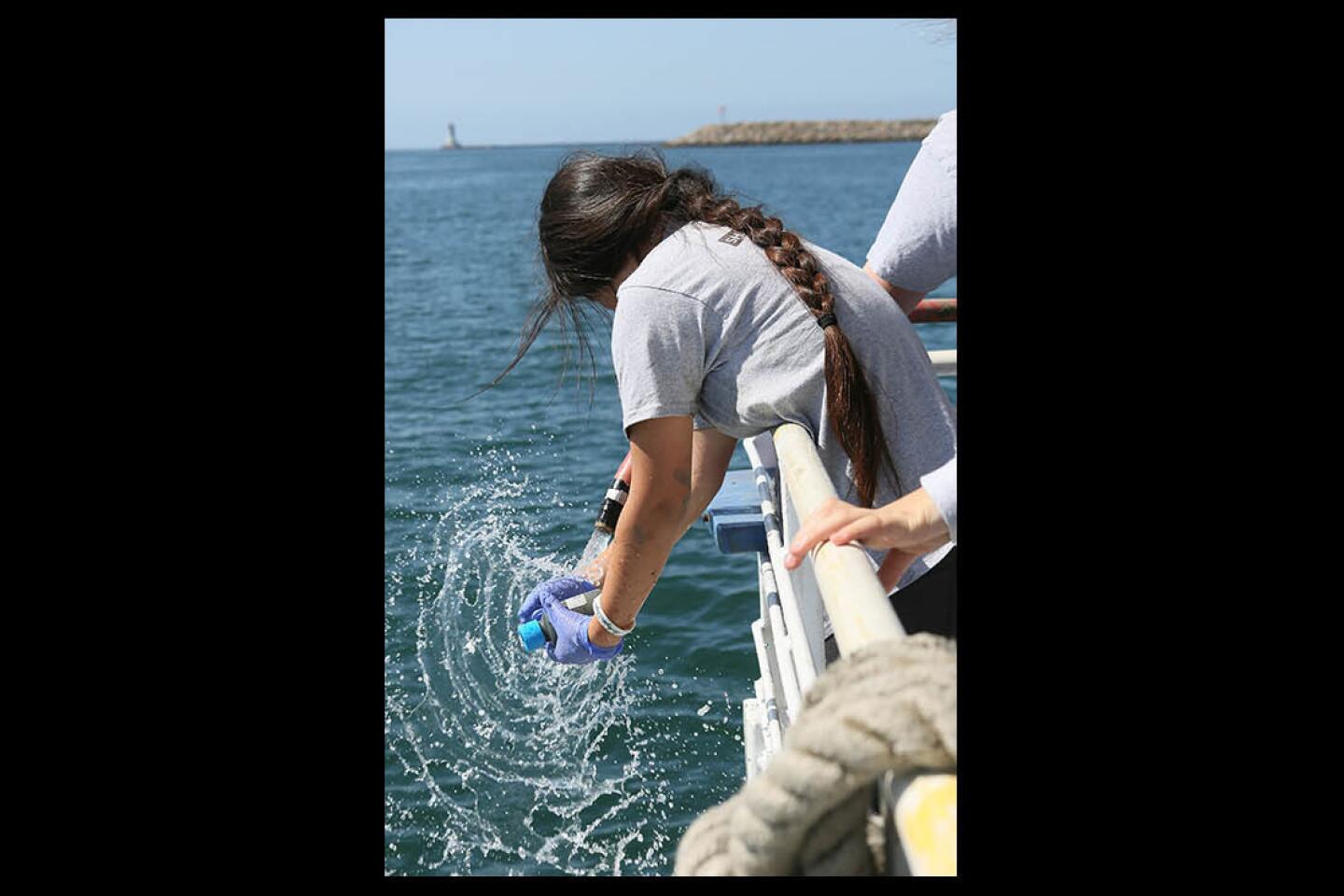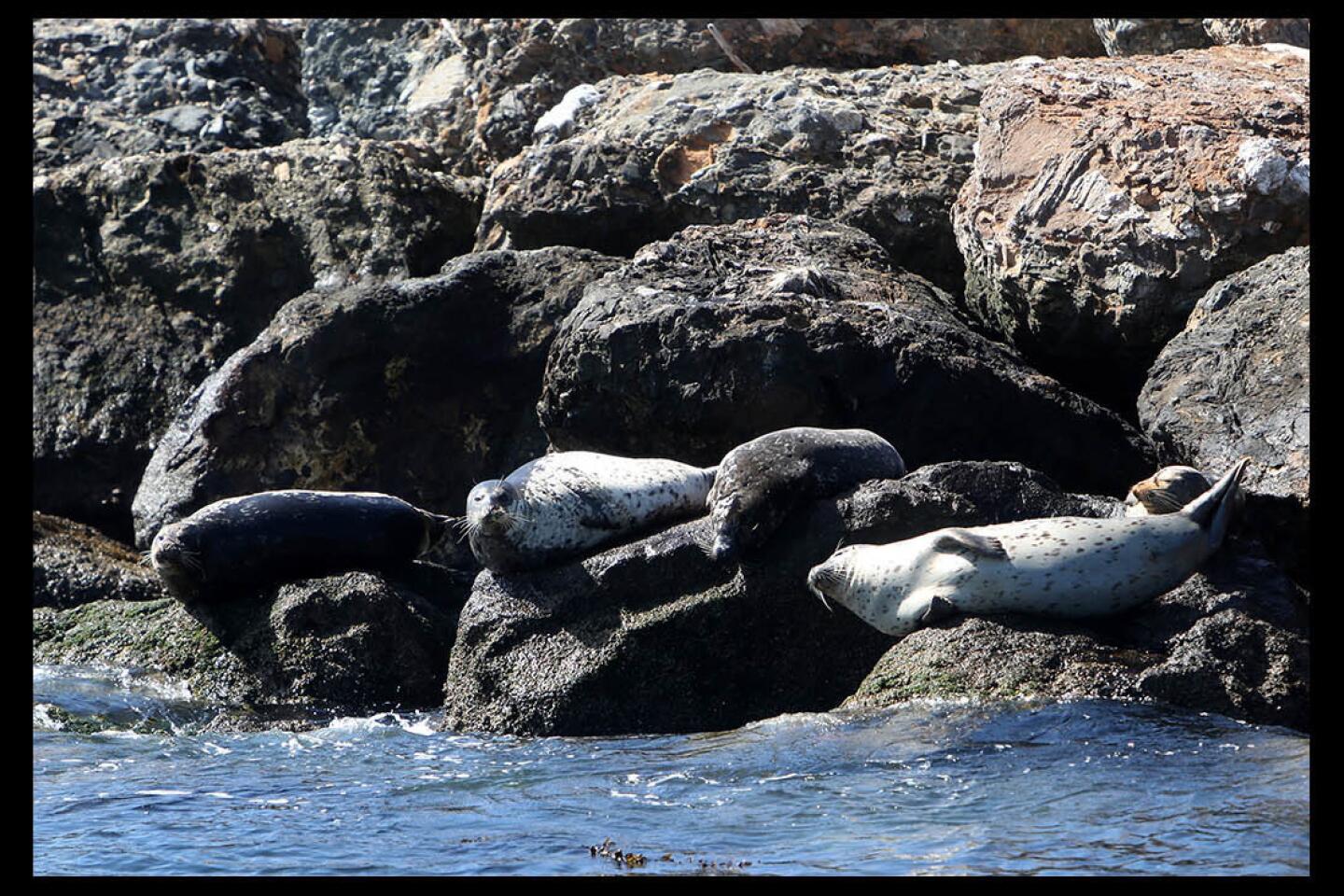Clark Magnet students hit pay dirt in Long Beach Harbor
- Share via
Oil has often been referred to as black gold.
Clark Magnet High School students hit their own sort of dirty, slimy pay dirt Wednesday morning in Long Beach.
Five members of the nine-person environmental geographic information systems class, led by instructor Dominique Evans-Bye, collected samples of underwater sediments throughout the Long Beach harbor area, beginning near the mouth of the Los Angeles River and extending outward.
The plan was to collect soil where previous mapping showed a high concentration of pollutants. Those samples were then tested for contaminants by Clark students at Long Beach State’s Institute for Integrated Research in Materials, Environments and Society.
The results are set to be available soon, while a small sample size will be turned over to Crescenta Valley High for DNA testing.
“The cool thing is, this is the students’ project, not mine,” Evans-Bye said. “They’re driving it, they’re leading it and they’re doing everything.”
On top of the research, the science trip on Wednesday was also part redemption tour.
What we learned is that if a project fails a first time, it doesn’t mean it’s the end of the world.
— Clark Magnet GIS Student Shreeja Guntireddy
Evans-Bye’s class was on its second journey to the river in just under a week. A voyage the previous Thursday resulted in no samples because of several setbacks, including the loss of a scooping bucket, the near choking of an engine propeller and the failed delivery of a digging apparatus.
“What we learned is that if a project fails a first time, it doesn’t mean it’s the end of the world,” student Shreeja Guntireddy said. “We always have a Plan B or a Plan C. This Monday, we talked about what we could do to make this trip better. There’s always something to learn.”
The most pressing cause for Evans-Bye’s class, however, was the need to complete a land-and-water entry as part of the Lexus Eco Challenge contest by Oct. 15. The national competition is available for secondary students, and winning schools can earn a portion of $50,000 in prizes.
The group succeeded in securing 17 glass or plastic vials and jars, between 3 and 8 ounces, over a three-and-half-hour period while taking part in the Los Angeles County Office of Education’s Marine Science Floating Laboratory program.
Evans-Bye’s class extracted samples from many locations, from Rainbow Bridge to Queen’s Gate, along Belmont Shore and around White and Freeman islands in the waters off Long Beach.
Capt. Chris Batts piloted a 63-foot catamaran christened “Christopher” from depths as shallow as 8 feet of water up to 35 feet. The trip was the first of the year for the county, which runs as many as four floating laboratories a week, according to educator Jim Matthews.
While the Christopher’s crew first utilized a Van Veen Grab Sampler, which is an underwater scooper, to secure sediments, students Shaye Holladay McCarthy and Emily Woods took control of the machine.
“It was a new experience to get to do hands-on lab work,” Woods said. “This just isn’t a preset lab. We’re conducting our own research and coming up with our own findings.”
The duo drenched their clothing in mud and even tiny krill, or small crustaceans, in the process of hauling in black and gray — sometimes claylike, sometimes gelatinous — muck, and cleaning off excess sediment.
“It was a lot of fun, but maybe because I’ve never had a problem getting dirty or dealing with weird textures like mud,” Holladay McCarthy said. “I know some people do, but the only problem was the smell. Once I got past that, it was a lot fun.”
The location of each sample was recorded using latitude and longitude coordinates by the student team of Shelia Mgrtichian and Guntireddy, while student cartographer Paul Kim aided in various aspects.
The Los Angeles Fire Department requested that the Clark group follow up on a study conducted by Evans-Bye’s 2006-07 class. That school year, Clark students found that dozens of toxins, such as mercury and lead, were well above the safety limits for marine sediments.
“We’re looking forward to sharing the info with L.A. City Fire,” Evans-Bye said. “They dive in these waters, and they want to know what they’re being exposed to. Hopefully, the answer is nothing, but if something comes up, we’ll find it.”
